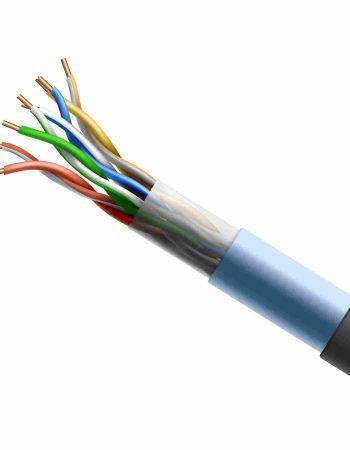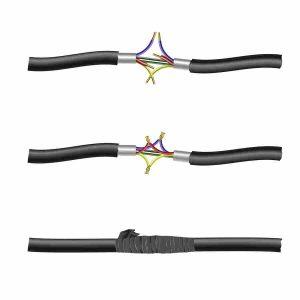In today’s digitally driven world, safeguarding our homes, businesses, and communities has become more crucial than ever. With the rise of sophisticated security threats, implementing effective Closed-Circuit Television (CCTV) systems has become a necessity. However, the backbone of any CCTV system lies in its network cabling infrastructure. In this comprehensive guide, we’ll walk you through the step-by-step process of properly installing network cabling for CCTV systems, ensuring maximum security and efficiency.
1. Planning and Preparation
Before diving into the installation process, meticulous planning is paramount. Start by assessing the layout of your premises and identifying key areas where CCTV cameras will be installed. Determine the optimal camera placements to cover vulnerable spots and high-traffic areas effectively.
Consider factors such as the field of view, lighting conditions, and potential obstructions that may impact camera performance. Create a detailed blueprint or map outlining camera locations, cable routes, and connection points to guide the installation process.
2. Selecting the Right Network Cabling Solution
The success of your CCTV system hinges on the quality of network cabling chosen. Opt for high-performance, durable cables that can withstand environmental factors and ensure reliable data transmission. Consider factors such as cable type (e.g., Cat5e, Cat6), length requirements, and compatibility with Power over Ethernet (PoE) technology for streamlined installation.
Evaluate the specific requirements of your CCTV system, such as the number of cameras, distance between cameras and the central recording device (DVR/NVR), and anticipated data traffic. Choose cabling solutions that can accommodate these requirements while providing ample bandwidth and signal integrity.
3. Gathering the Necessary Tools and Equipment
Equip yourself with the essential tools and equipment needed for the installation process. This may include cable cutters, crimping tools, cable testers, mounting hardware, and safety gear such as gloves and goggles. Having the right tools on hand will streamline the installation process and ensure precision.
Additionally, consider investing in cable management accessories such as cable trays, conduits, and cable ties to maintain neat and organized cabling infrastructure. Proper cable management not only enhances aesthetics but also minimizes the risk of cable damage and interference.
Also Read: Cell Signal 101: Everything You Need to Know About Cell Signal Booster Installation
4. Cable Routing and Management
Begin by carefully routing the network cables from the central location (e.g., server room or DVR/NVR) to each designated camera location. Pay close attention to cable management principles to minimize clutter and avoid potential hazards. Plan cable routes that minimize exposure to environmental hazards such as extreme temperatures, moisture, and physical damage.
Utilize cable trays, conduits, and cable channels to neatly organize and secure the cables along their path. Ensure proper support and strain relief to prevent cable sagging or tension, which can lead to signal degradation and premature cable failure.
5. Camera Installation and Connection
With the network cabling in place, proceed to install the CCTV cameras at the predetermined locations. Ensure proper mounting and alignment for optimal coverage, taking into account factors such as camera height, angle, and field of view.
Once the cameras are securely in place, connect each camera to the network cabling using appropriate connectors and terminations. Follow industry-standard wiring practices and verify polarity and continuity to ensure reliable connectivity.
If utilizing Power over Ethernet (PoE) technology, ensure that the network switches or injectors supplying power to the cameras are properly configured and capable of delivering sufficient power. Test the connections to verify functionality and signal integrity before proceeding to the next step.
6. Testing and Quality Assurance
Before finalizing the installation, conduct comprehensive testing of the entire CCTV system. Use cable testers to check for continuity, signal strength, and potential issues such as impedance mismatch or interference. Verify proper communication between the cameras, DVR/NVR, and monitoring devices to ensure seamless operation.
Perform a thorough inspection of each camera’s video feed to ensure clarity, consistency, and adequate coverage. Adjust camera settings as needed to optimize image quality and exposure. Test the functionality of additional features such as motion detection, night vision, and remote access to verify proper operation.
7. Documentation and Maintenance
Document the installation details, including cable routes, camera locations, and connection diagrams, for future reference and troubleshooting purposes. Create a comprehensive inventory of all installed equipment, including make, model, and serial numbers, to facilitate maintenance and replacement.
Establish a regular maintenance schedule to inspect and maintain the network cabling and CCTV components. Conduct periodic cable inspections to identify signs of wear, damage, or degradation and address any issues promptly. Clean camera lenses and housings regularly to ensure clear and unobstructed views.
By following this step-by-step guide, you can ensure the proper installation of network cabling for CCTV systems, bolstering your security infrastructure and providing peace of mind. Remember, investing in high-quality network cabling solutions is the cornerstone of a robust and dependable surveillance system. Stay proactive in maintaining your CCTV system to safeguard against potential threats and vulnerabilities, ensuring the safety and security of your premises.
Conclusion
You can strengthen your security infrastructure and give yourself piece of mind knowing that your property is guarded against potential dangers and vulnerabilities by following this step-by-step guidance and investing in high-quality network cabling solutions. Maintaining your CCTV system on a proactive basis will help to protect your belongings, workers, and loved ones while also creating a secure workplace for everyone. You can create a reliable security architecture that endures over time with the correct network cabling and installation methods.






